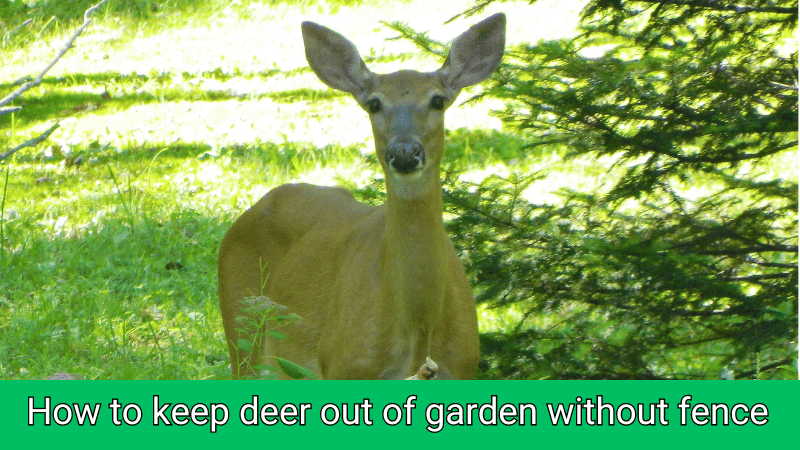This post may contain Amazon affiliate links. Please see the disclaimer page for more details.
Did you know deer can jump 8 feet high? They are a big challenge for gardeners. They can easily jump over high fences to eat your plants. But, you can use different tactics to keep them away without a fence.
This guide will show you how to protect your garden from deer. We’ll discuss repellents, deterrents, and plants that deer don’t like. By knowing how deer think and using these methods, your garden will be safe.
We will talk about homemade sprays and smart garden layouts. These are proven ways to protect your garden from deer. Let’s explore how to keep deer out without using a fence.
Understanding Deer Behavior
To keep deer away from the garden, knowing their behavior is key. Deer love places where woods and open areas meet. This mix gives them lots of different plants to eat and a home.
They use their excellent sense of smell to find tasty plants like tulips. Meanwhile, they avoid those that smell bad or taste bad.
Deer Habitats and Feeding Patterns
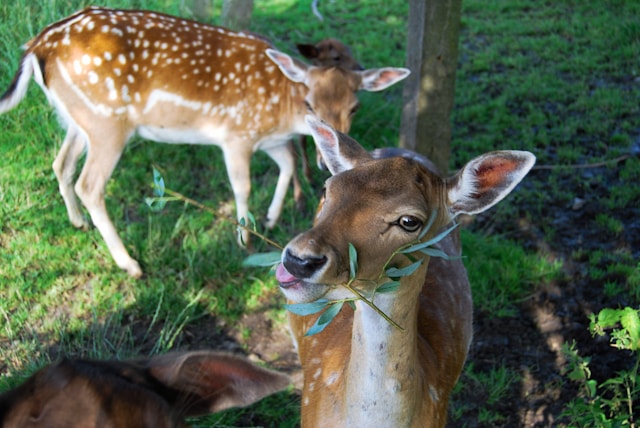
Deer do best where forests and meadows meet. This way, they find good places to hide and plenty of food.
They know how to move through trees and into fields to eat. Learning about what deer like to eat and how they move is important. It helps us keep them away from our gardens.
Attractants and Repellents
Deer like to eat certain plants but hate some smells and tastes. Items like rotten eggs, baking powder, and essential oils can keep them away.
They don’t like the smell or taste of these items, so they avoid the plants that are treated. There are also deer repellents that you can buy
A 2010 study by JEFFREY S. WARD and SCOTT C. WILLIAMS tested different types on yew plants. They found that products like Bobbex and Hinder, which are made with eggs, work best.
Repellent Sprays and Solutions

The best way to keep deer out of your garden is with deer repellent sprays and solutions. They use ingredients that deer don’t like to smell or taste. This makes your plants less interesting to deer.
Popular commercial products:
| Repellent | Active Ingredient | Reapplication Frequency |
|---|---|---|
| Liquid Fence | Rotten eggs, garlic | Every 2-4 weeks |
| Deer Out Spray | minty smell | Every 4-6 weeks |
| Plantskydd Animal Repellent Spray | Blood meal | Every 6-8 weeks |
- Liquid Fence and Deer Off Spray have foul smells and tastes from ingredients like rotten eggs and essential oils.
- Deer Out Spray also smells like concentrated minty smell and tastes like garlic, deterring deer.
- Plantskydd Animal Repellent contains blood meal as the main active ingredient and sticks well to plants for long-lasting protection (needs reapplication after rain).
- Homemade deer repellents can also work well, such as a mixture of rotten eggs, baking powder, and essential oils.
- Coyote urine is not an effective deer repellent, according to studies.
- Using human hair might help deter deer due to the unpleasant smell.
- Reapplication frequency depends on the product, weather conditions, deer behavior, and local deer habits. Some products need reapplication every few weeks, while others can last a few months.
Scent Deterrents
Deer smell things really well. They have 297 million olfactory receptors in their noses. You can keep deer out of your garden by using natural deer repellent scents such as manure, offal, and fish oil. These odors will make your garden uninviting to them.
Auditory and Visual Deterrents

Deer are jumpy. Using deer auditory deterrents and deer visual deterrents can keep them away from your garden. Noises or quick movements can surprise them, making them avoid your yard.
One method is to put softener strips or ribbons around your garden. When the wind blows, they will move and make noise. This can scare off deer. Wind chimes can also help. They make noise when the wind blows, which might bother the deer.
There are also high-tech options, like deer motion deterrents. It’s a motion-activated sprinkler. It sprays water if it senses movement, startling deer away.
Note: deer might get used to these methods over time. To keep them effective, change the location of these deterrents now and then. This will keep the deer guessing and not used to one area of your garden.
When using these methods, think about your neighbors and the environment. Some, like wind chimes, are gentle. But others, like sprinklers, might be more disruptive. Check your area’s rules about noise and water use.
- Use deer auditory deterrents such as softener strips or wind chimes to scare off deer with sound.
- Try deer visual deterrents like motion-activated sprinklers that surprise deer with water
- Change the spot of these methods often to keep them working against deer.
- Remember the effects on neighbors and the area when trying these deterrents.
By mixing different types of sound and sight tools, gardeners can make their garden a scary place for deer. This way, the deer are less likely to come in at all.
Physical Barriers

This article has focused on non-fence methods. Still, physical barriers are a key way to keep deer from the garden.
Deer can jump high, so you need a fence at least 8 feet tall. Deer-proof fencing or tall fences for deer are reliable ways to protect your plants.
Fence Types and Considerations
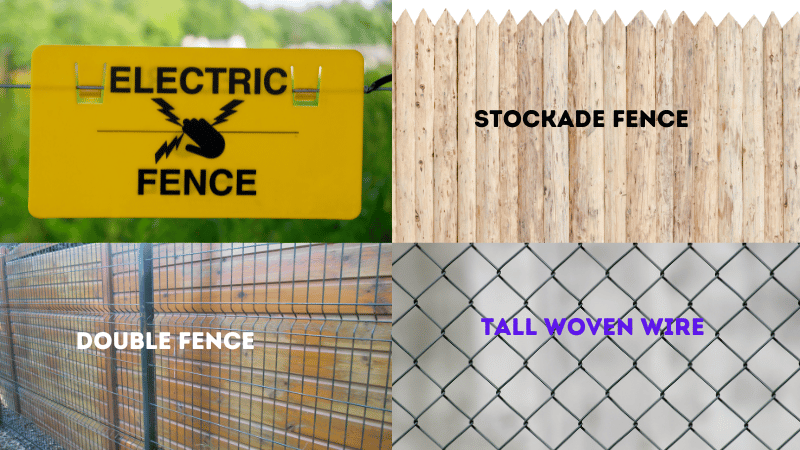
Height matters when picking a deer fence. Deer can jump over anything under 8 feet. So, tall deer fencing must be 8 feet or higher. This keeps deer from leaping over. Electric fences also work. They shock deer, keeping them away.
Stockade fences look good but need to be tall and have no gaps. Deer get through easily if there’s a hole. Chicken wire and plastic netting work for smaller plants. They’re good for keeping deer out.
A clever way to stop deer is with two fences set 3-5 feet apart. This setup confuses them due to poor vision. They find it hard to jump both fences.
Our Quick Guide to Fencing
| Fence Type | Height | Pros | Cons |
|---|---|---|---|
| Tall Woven Wire | 8 feet or higher | Effective against jumping, durable | Visible, may require professional installation |
| Electric Fence | 6-8 feet | Shock deterrent, low visibility | Requires maintenance, potential hazard |
| Stockade Fence | 8 feet or higher | Aesthetically pleasing, durable | Expensive, gaps can form over time |
| Double Fence | 8 feet or higher, 3-5 feet apart | Confuses deer, additional protection | Requires more space, higher cost |
Keep your deer fence in good shape. This makes sure it works well. Also, use more than one deer deterrent for a better defense.
Garden Design and Plant Choices

Adding deer-resistant plants to your garden helps keep deer away without a fence. The author suggests using aromatic plants like lavender, sage, and rosemary. They also mention moisture-loving and deer-resistant plants such as lamb’s ear and Russian sage.
Aromatic plants
Deer have a great sense of smell, so plants like lavender, sage, and rosemary can keep them away.

These deer deterrent aromatic plants smell so strong that deer don’t like it. This means they’re less likely to eat your garden if you have these plants around.
Note: According to the Department of Natural Resources at Cornell University, deer-resistant plants may reduce browsing on individual shrubs or trees by 50-75%.
Moisture-rich, but deer-resistant
Deer love plants with lots of water in them. Yet, some, like lamb’s ear and Russian sage, have lush leaves that deer don’t find tasty.
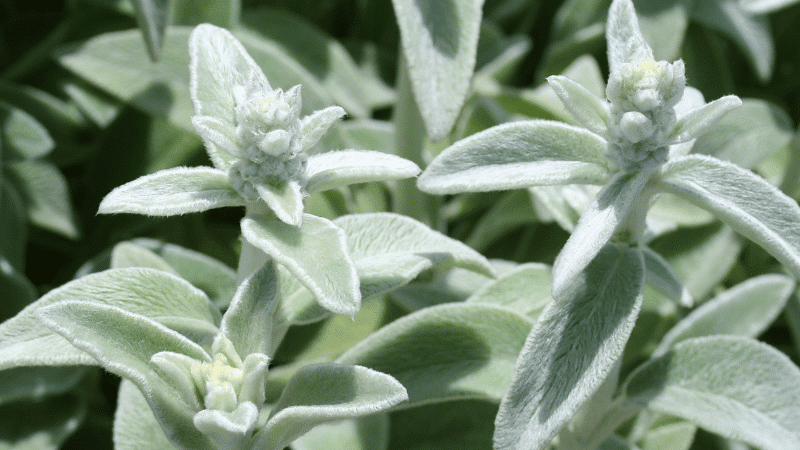
By planting these deer resistant moisture plants, you make your garden visually pretty and not a place where deer will snack.
For color
To add color and deer deterrence to your garden, consider deer-resistant plants. Snapdragons and marigolds are examples of deer-resistant flowers. They not only brighten up your garden but also keep deer away.

Placing these plants strategically makes your garden less inviting to deer. This helps protect your plants from being eaten.
Strategic Garden Layout

Choosing deer-resistant plants is key, but the way you arrange your garden matters too. A layered design can keep deer away effectively.
Barricade with Plants
One effective way is to plant dense layers of deer deterrent plants around your garden. Using strong-smelling herbs like lavender, sage, or rosemary works well. Their smells turn into invisible yet powerful deer resistant plant barriers. These barriers make deer want to stay away.
Also, think about adding thorny or fuzzy plants at the garden edges. Barberries, hollies, or lamb’s ear are good choices. Their prickly leaves and stems make it hard for deer to get through. The deer won’t like the feel, so they won’t come in.
Layering
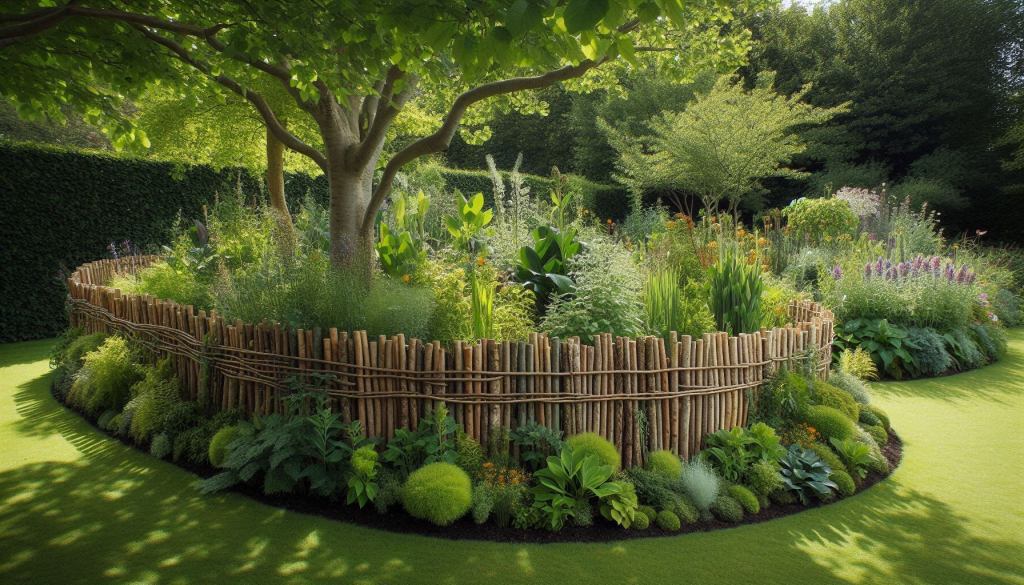
Inside, layer your garden strategically. Place tall plants outside, like deer-proof shrubs or trees. This adds defense and frames your garden. It also makes your garden more interesting.
Add medium plants next, like deer-resistant flowers and plants. Place ones that deer don’t like close to the outer layers. This protects the more vulnerable plants inside. Use deer deterrent plant layering to keep deer at a distance.
| Layer | Plant Types | Examples |
|---|---|---|
| Outer Layer | Tall, deer-resistant plants | Ornamental grasses, barberries, hollies |
| Middle Layer | Medium plants | Lavender, sage, Russian sage, catmint |
| Inner Layer | Vulnerable plants | Vegetables, fruit trees, herbaceous perennials |
This approach not only keeps deer away but also layers your garden beautifully. It makes your garden a less attractive place for deer while keeping it inviting for you.
Conclusion
In conclusion, there are many ways to keep deer out of your garden. You can do this without a full fence. Understanding how deer act helps a lot. Use sprays and smells that deer don’t like. Also, set up things in the garden that scare them away.
To make your garden safe from deer, use many ways together. Some methods work best depending on your garden. You might try sprays or grow plants like lavender and rosemary.
With the tips in this article, you can keep your garden safe. By combining different ways to manage deer, you’ll have a beautiful place. This way, you can enjoy your garden without worrying about deer.
Zaki Infitar is the driving force and creative mind behind GreenBuilt.co. As a self-taught gardener with an unwavering passion for all things green, Zaki’s journey into the world of gardening is a testament to his dedication and love for nature.

